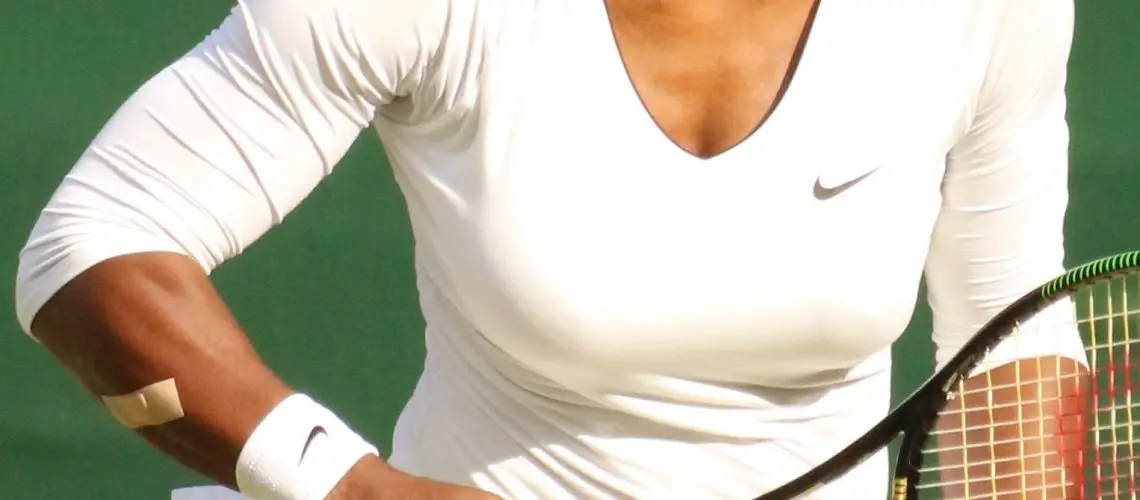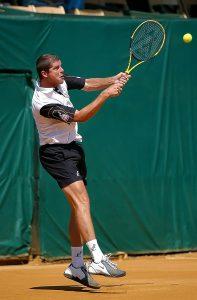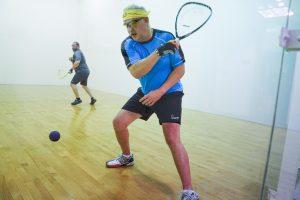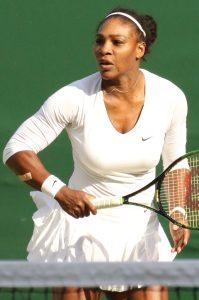We may earn money or products from the companies mentioned in this post.
Introduction to Ace in Tennis

Tennis is a game of precision and skill, where every shot counts One particular shot that often leaves spectators awestruck is the ace In this article, we will dive into the world of aces in tennis, exploring their definition, importance, and frequency in both professional and amateur games
Definition of an Ace
An ace in tennis refers to a serve that is untouched by the opponent and lands within the designated service box It is an unreturnable shot that flies past the opposing player without giving them any chance to react or make a return Aces are usually powerful serves that travel at high speeds, leaving even the most skilled players struggling to reach them
Importance and Role of Aces in Tennis Matches
Aces play a crucial role in determining the outcome of tennis matches They have the power to shift momentum, boost confidence, and demoralize opponents When a player hits an ace, they not only win the point effortlessly but also gain an advantage psychologically It puts pressure on their opponent’s serve as it sets high expectations for themselves to match or surpass such excellent shots
In addition to its psychological impact, aces are also valuable because they allow players to conserve energy during matches Instead of engaging in long rallies and exhausting exchanges, players can rely on their powerful serves to secure quick points This strategy becomes particularly valuable when facing tough opponents or during critical moments in a match
Frequency of Aces in Professional and Amateur Games
The frequency of aces varies between professional and amateur tennis games due to differences in skill levels and playing styles In professional matches, where players possess exceptional serving abilities, aces occur more frequently Top-ranked players like Serena Williams or Novak Djokovic can hit multiple aces in a single match, showcasing their dominance on the court
On the other hand, in amateur games, aces are less common due to the lower level of serving proficiency However, as players improve their skills and gain experience, they may start incorporating more powerful serves into their repertoire, increasing the likelihood of hitting aces
It’s worth noting that factors such as court surface, weather conditions, and equipment also influence the frequency of aces For instance, fast surfaces like grass or hard courts tend to favor big servers and result in higher ace counts compared to slower surfaces like clay
In conclusion, aces are an exciting aspect of tennis that adds thrill and excitement to matches They represent skillful execution and provide players with numerous advantages both mentally and physically Whether you’re watching a professional tournament or playing with friends at your local club, keep an eye out for those awe-inspiring aces that leave everyone amazed
How to Achieve an Ace in Tennis

When it comes to tennis, few things are as satisfying as serving up an ace It’s a shot that leaves your opponent scrambling and gives you a significant advantage in the game To achieve this feat, you need a combination of skill, strategy, and technique Let’s explore the different types of serves that can result in an ace
Types of Serves That Can Result in an Ace
The first step towards acing your serve is understanding the different types of serves at your disposal:
-
Flat Serve:
This serve involves hitting the ball with power and minimal spin, aiming for a direct trajectory over the net -
Slice Serve:
The slice serve utilizes side-spin to curve the ball away from your opponent, making it challenging to return -
Kick Serve:
A kick serve imparts topspin on the ball, causing it to bounce high and kick off the court unpredictably -
Underhand Serve:
While less common at higher levels of play, an underhand serve can catch opponents off guard due to its unusual nature
Strategies for Targeting Opponents’ Weaknesses
To increase your chances of acing your serves, it’s essential to exploit your opponent’s weaknesses Here are some strategies you can employ:
-
Exploiting Weak Backhands or Forehands:
Pay attention to which side your opponent struggles with more and direct your serves accordingly -
Changing Up Service Patterns:
Keep your opponents guessing by varying the pace, spin, and placement of your serves -
Hitting Precise Angles and Targets on the Court:
Aim for the corners of the service box or other vulnerable areas to make it harder for your opponent to return
Physical and Technical Aspects Needed for Strong Serving
To unleash powerful serves consistently, you must focus on specific physical and technical aspects:
-
Tennis Racket Grip and Preparation:
Ensure you have a proper grip on your racket that allows you to generate maximum power during your swing Additionally, having a well-practiced pre-serve routine can help establish rhythm and consistency -
Ball Toss Consistency:
Practice tossing the ball consistently in terms of height, placement, and timing A consistent toss sets up the foundation for a strong serve -
Pronation During the Service Motion:
Pronation refers to the rotation of your forearm during the service motion It helps generate additional power and spin on your serves
Acing your serve requires a combination of practice, strategy, and technique By mastering different types of serves, targeting opponents’ weaknesses strategically, and honing physical and technical aspects, you’ll increase your chances of achieving an ace in tennis
Statistics and Records Related to Aces in Tennis History

Most number of aces by individual players (career)
When it comes to serving aces, there are some players who have truly mastered the art Let’s take a look at the top male and female players with the highest career aces:
-
Top male players with highest career aces:
- Roger Federer: With his smooth and powerful serve, Federer has set an incredible record for the most career aces His precision and timing make it difficult for opponents to return his serves
- Ivo Karlovic: Known for his towering height, Karlovic has utilized his stature to become one of the most prolific servers in tennis history His ability to hit massive serves has earned him a spot among the leaders in career aces
-
Top female players with highest career aces:
- Serena Williams: A force to be reckoned with on the court, Serena Williams possesses both power and accuracy in her serve Her aggressive style has helped her accumulate an impressive number of career aces
- Petra Kvitova: With her left-handed advantage, Kvitova has developed an exceptional serve that often catches her opponents off guard Her ability to consistently hit powerful serves has contributed to her high tally of career aces
Single-match records for most number of aces (male & female)
The pursuit of single-match ace records is filled with excitement and anticipation Let’s explore both Grand Slam and non-Grand Slam records:
-
Grand Slam records:
- Men’s record: In 2010, John Isner and Nicolas Mahut engaged in an epic battle at Wimbledon that lasted for over 11 hours During this match, they shattered the record for the most aces in a single match, with Isner firing an astonishing 113 aces
- Women’s record: At the Australian Open in 2011, Kirsten Flipkens and Anna Tatishvili set the record for the most aces in a women’s singles match They combined to hit 31 aces, showcasing their serving prowess
-
Non-Grand Slam records:
- Men’s record: In an ATP Tour match in 2018, Ivo Karlovic unleashed his thunderous serve to hit a remarkable 61 aces This impressive feat solidified his position as one of the all-time great servers
- Women’s record: In a WTA Tour match in 2009, Kristyna Pliskova blasted her way into history by smashing 31 aces Her exceptional serving display left spectators in awe
Role of surface type on the likelihood of hitting an ace
The playing surface can significantly impact the likelihood of hitting an ace Let’s take a closer look at how different court surfaces affect this aspect of the game:
-
Grass courts:
-
Clay courts:
-
Hard courts:
Grass courts are known to favor big servers due to their low bounce and fast pace The quick surface allows players to hit flatter serves, making it easier to generate pace and accuracy, resulting in a higher number of aces
Clay courts provide a slower surface with higher bounce, which makes it more challenging to hit aces The ball tends to lose speed and spin off the court, giving opponents more time to react and return serves effectively
Hard courts offer a balanced playing surface that allows for different styles of play The medium-paced surface provides enough bounce for aggressive servers to hit effective aces while still giving opponents a chance to defend against powerful serves
Myths and Misconceptions about Aces in Tennis

You need extreme power for an ace
One common myth surrounding aces in tennis is that you need to possess extreme power to hit one While power certainly helps, it is not the sole determining factor A well-placed serve with accuracy and precision can often be just as effective as sheer power The ability to mix up your serves, vary the placement, and disguise your intentions can make it challenging for opponents to return your serve, regardless of how hard you hit it
Ace servers are unbeatable
Another misconception is that players who consistently hit aces are unbeatable on serve While a powerful serve can give a player a significant advantage, it doesn’t guarantee victory Tennis is a game of strategy and skill, and even the most proficient ace server must rely on other aspects of their game to win matches Returners may adjust their positioning, timing, or anticipate where the serve will go, making it more difficult for even the best servers to maintain an unbeatable record
FAQs about Tennis Aces

Is there any limit to how many times you can attempt an ace in a game?
No, there is no specific limit on how many times you can attempt an ace in a game As long as your serves remain within the boundaries and meet all other rules of tennis, you can keep trying for those elusive aces throughout the match However, keep in mind that aiming solely for aces may leave you vulnerable if your opponent becomes adept at returning your serves
How do you differentiate between an ace and a service winner?
The key difference between an ace and a service winner lies in whether or not the returner makes contact with the ball In the case of an ace, the returner fails to make any contact with the serve, resulting in a point for the server On the other hand, a service winner occurs when the returner touches the ball but fails to put it back into play effectively, leading to a point for the server as well
What’s the fastest recorded ace in tennis history?
The fastest recorded ace in tennis history is an impressive feat that showcases incredible speed and precision As of now, Ivo Karlovic holds this record with a blistering serve clocked at 156 miles per hour (251 kilometers per hour) during a Davis Cup match against Germany’s Mischa Zverev in 2011 This astonishing display of power demonstrates just how formidable players can be when it comes to serving aces
Can you score an ace on both first and second serves?
Absolutely! It is possible to score an ace on both your first and second serves In fact, many players strive to achieve this level of consistency and dominance on their serves A well-executed serve that catches your opponent off guard can result in an unreturned shot regardless of whether it is your first or second attempt However, keep in mind that landing successful aces on second serves requires careful planning and execution as opponents often anticipate weaker shots during this phase of play
Useful Links

What is an Ace in Tennis?
What Does Ace Mean In Tennis?
What Is A Return Ace In Tennis? Definition & Meaning …
What is an ace in tennis? 2023 Updated
What Is An Ace in Tennis? – Definition & What Counts
What Is An Ace In Tennis?
Ace. Meaning in tennis. Definition. Wiki. Terms
Q&A: The origin of ace, deuce, love
Tennis ace definition in American English
What Is An Ace In Tennis?
Tennis Terms and Definitions | USTA
What is an Ace in Tennis – G SPORTS ZONE
Is it an ace
What is an Ace in Tennis? Definition & Record for Most Aces
What is An Ace In Tennis 2023? Easy Guide
Ace Definition & Meaning
What Is An Ace In Tennis?
Ace Definition & Meaning
Mario Tennis Aces
▷ Ace Betting (Tennis) Explained I Quick Sport Betting Guide






